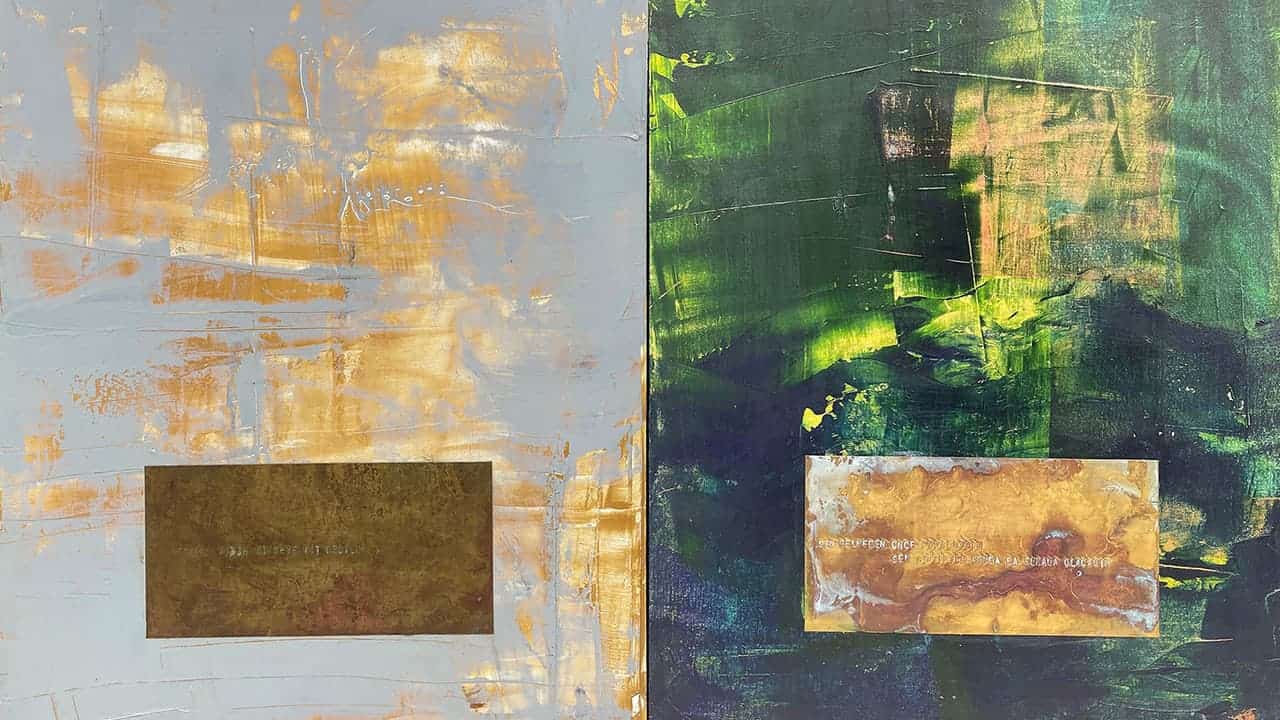Kirkor Sahakoğlu questions yesterday, today, tomorrow and peace through the olive tree in his new exhibition. The painter dedicates his exhibition to the earthquake zone, where the struggle to recreate life continues.
“Olea prima omnium arborum est”, this Latin phrase for the olive, which has been described throughout history as the ‘tree of peace’, ‘tree of life’, ‘dead tree’ means “Olive is the first of all trees”. The holiness of this tree in the course of history stretches from Ancient Greece to the Middle East and Egypt… In Greek mythology, the olive tree is the “most precious gift” given to Zeus, “the fruit of Goddess Isis” in Ancient Egypt, “the symbol of enlightenment of God Ra”… In the holy books, the olive tree is referred to as “…and humanity is reborn with olives”, “the king of the trees”.
Now, this ‘legendary’ tree inspires the painter Kirkor Sahakoğlu. Sahakoğlu presents the projections of the olive tree to the audience in his exhibition titled “I Belong to Everyone and I Do Not Belong to Anyone” opened at IMOGA Art Space. The name of the exhibition goes back to Ionia. According to the legend in the “Iliad” epic, Homer sat in the shade of an olive tree while he was visiting the Aegean coast. The olive tree speaks and says to Homer, “I belong to everyone, I belong to no one. I was here before you came. I will be here after you leave.”
Kirkor Sahakoğlu Deals with the Olive Tree
Sahakoğlu deals with the olive tree in his works based on this legend. The exhibition, whose foundations were laid in Ayvalık, is kneaded with what Homer tells. The painter, who uses the olive tree as an allegory, describes his exhibition inspired by the tree, which has been attributed to holiness, hope, peace and fertility for centuries, and said, “Olive and olive oil have a very special identity for me. My father used to make olive oil cans. We spent our lives making olive oil cans and sending them to the people of Ayvalık. There is also a sacred icon of the olive tree for me. As you know, there has always been a mentality that declared war on the olive tree… Even the Persians tried to destroy the olive tree in Athens in 4000 BC. When they thought they had destroyed it, the olive tree sprouted again and went on with its life. Therefore, the olive tree represents yesterday, today, but most of all, tomorrow. It represents the permanence of societies and resilience. While I was preparing for this exhibition, we experienced the earthquake disaster. People in the earthquake area had to migrate from their places and homes. There is now a war to recreate life in those regions. There are efforts to displace societies, to keep their cultures alive, and that’s what I dedicate my exhibition to.”

New project climate crisis
Kirkor Sahakoğlu said, “While an apple tree yields in 20-30 years, the olive gives its ripest fruit to the next generation. We are talking about a seed that a person sows for the next generations, it is very self-sacrificing and self-sacrificing. One day, this exhibition will turn into another exhibition, it will be the lifeblood of another exhibition. In my new project, I will focus on the climate crisis. Because I want to tell you that when people try to create things in the world, they first destroy existing ones.”
About Kirkor Sahakoğlu
Born in Istanbul, Kirkor Sahakoğlu graduated from Getronagan High School and then from the State School of Applied Fine Arts, Department of Advertising Graphics. He later completed his master’s degree at the Istituto Europeo Di Design in Milan. He studied at the Domus Academy for a while and attended workshops.
His closeness to Foucault, Adorno and existential philosophy is reflected in all of his works.
He carries out all of his works in an improvisational style, parallel to Milan Kundera’s words “Only coincidence tells us something…”
He usually brings together different materials in his narratives.
Sahakoğlu, who has been teaching at the Graphic Arts Department of Marmara University’s Faculty of Fine Arts since 2000, continues his paintings in his studio in Galatasaray, Istanbul.
